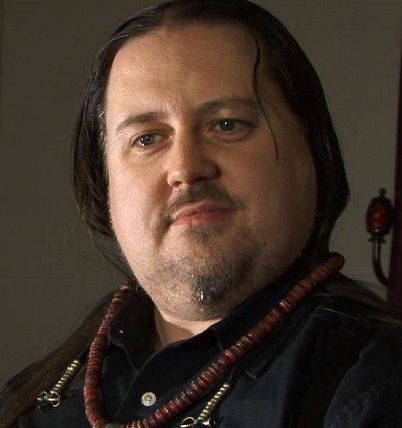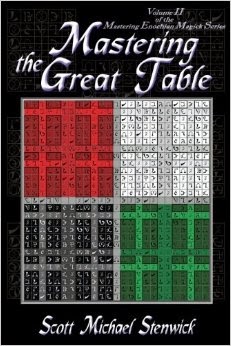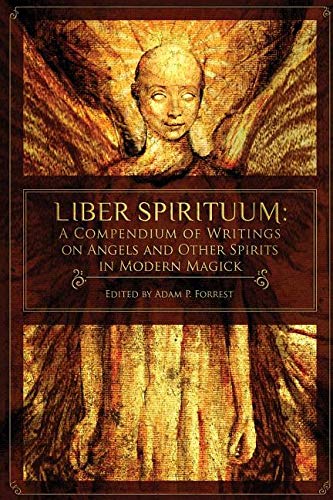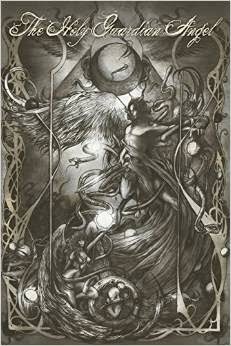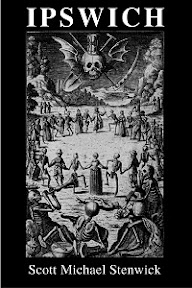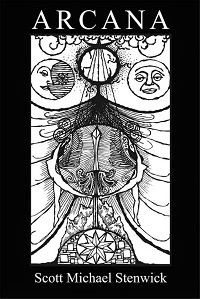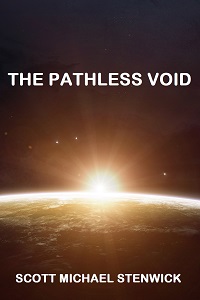 I just finished Enochian Initiation by Frater W.I.T. and found it to be a fascinating piece of magical work. It is exactly the sort of magical research that I have contended for years that our community should be publishing. Except under certain specific circumstances (like initiation rituals that are designed to surprise the candidate in some way) secrecy is not terribly useful in magick, despite a great deal of prejudice in favor of keeping magical teachings hidden throughout the history of the Western Esoteric Tradition. If even a dozen or so magicians a year could publish a collection of magical diaries like this every year we would be well on our way to building a collection of techniques and practices that would be effective for many people.
I just finished Enochian Initiation by Frater W.I.T. and found it to be a fascinating piece of magical work. It is exactly the sort of magical research that I have contended for years that our community should be publishing. Except under certain specific circumstances (like initiation rituals that are designed to surprise the candidate in some way) secrecy is not terribly useful in magick, despite a great deal of prejudice in favor of keeping magical teachings hidden throughout the history of the Western Esoteric Tradition. If even a dozen or so magicians a year could publish a collection of magical diaries like this every year we would be well on our way to building a collection of techniques and practices that would be effective for many people.The book is made up of two sections. The first is a collection of magical journal entries spanning five years, from 1999 to 2004. During that period the author invoked all of the Kings and Seniors who inhabit the Watchtowers of John Dee and Edward Kelly's Enochian system of magick twice. The first round of invocations was done quickly, more to get a feel for the nature of the energies involved, and the second was slower and more deliberate, done with the intention of fully assimilating and integrating the nature of each King and Senior. The second section of the book consists of the temple rituals used in the invocations along with commentary on them.
The author works from the perspective of the Golden Dawn elemental mappings for the four quadrants of the Watchtowers, and uses the Golden Dawn order for the Angelic Keys or Calls. I've explained some of my concerns about those attributions in other articles, but it is also true that a number of modern magicians have observed that the Enochian system adapts well to various symbolic mappings. Whatever intellectual criticism can be leveled against the Golden Dawn system, it is basically coherent and has been used for many years. From the journal entries in the book, it clearly works, at least for the author. Many of the visions described are quite profound and seem to follow the general order of unfolding realization described in many spiritual systems, not just Western Esotericism. Looking at the cover of the book I also realized that if you place the quadrants of the Reformed Tablet as they appear in Dee's 1587 diagram and use the Golden Dawn elemental attributions for the Kings, they follow the order of the points of the pentagram. I spent years studying the Reformed Tablet and never made that connection.
As an interesting observation, here is another magician who has figured out the Operant Field. The author uses Lesser Banishing Ritual of the Pentagram to open his rituals and moves on to the Lesser Invoking Ritual of the Hexagram rather than the Lesser Banishing Ritual of the Hexagram recommended by Donald Michael Kraig and many other modern magical writers. In my experience, following the LBRP with the LIRH is much more effective for any sort of practical magical work, and most of the skilled magicians that I know use the invoking form of the Lesser Hexagram as well. Also, the author went ahead and developed his own Thelemic keyword analysis, which is a step that our ritual group took as well. It's helpful to do that because the standard Golden Dawn version represents the aeonic formula of Osiris while Thelemites work with that of Horus.
The only real criticism of the book that I can put forth is that I would have liked to see more examples from the author's life that could clarify how well these rituals actually worked. Especially toward the beginning of the book the author keeps talking about how he invoked one angel or another "to excellent effect." In my experience, it is not that difficult to perform a magical ritual that "feels good." To be sure that a ritual is working, you need to look at your life and see if unlikely things that support the objective of the rite or are in some way related to it are really happening. Of course, since the author published the book under a pseudonym he probably wants to remain at least somewhat anonymous, and that would preclude the inclusion of detailed personal information beyond the workings themselves.
In short, the book is excellent and I recommend it to any serious ritual magician, especially anyone interested in the Enochian system. At some point in the future my magical working group may try working through the Kings and Seniors and see if we get similar results.
Want to buy your own copy of Enochian Initiation by Frater W.I.T.? Order from my Books and Media page and you can help support Augoeides.








